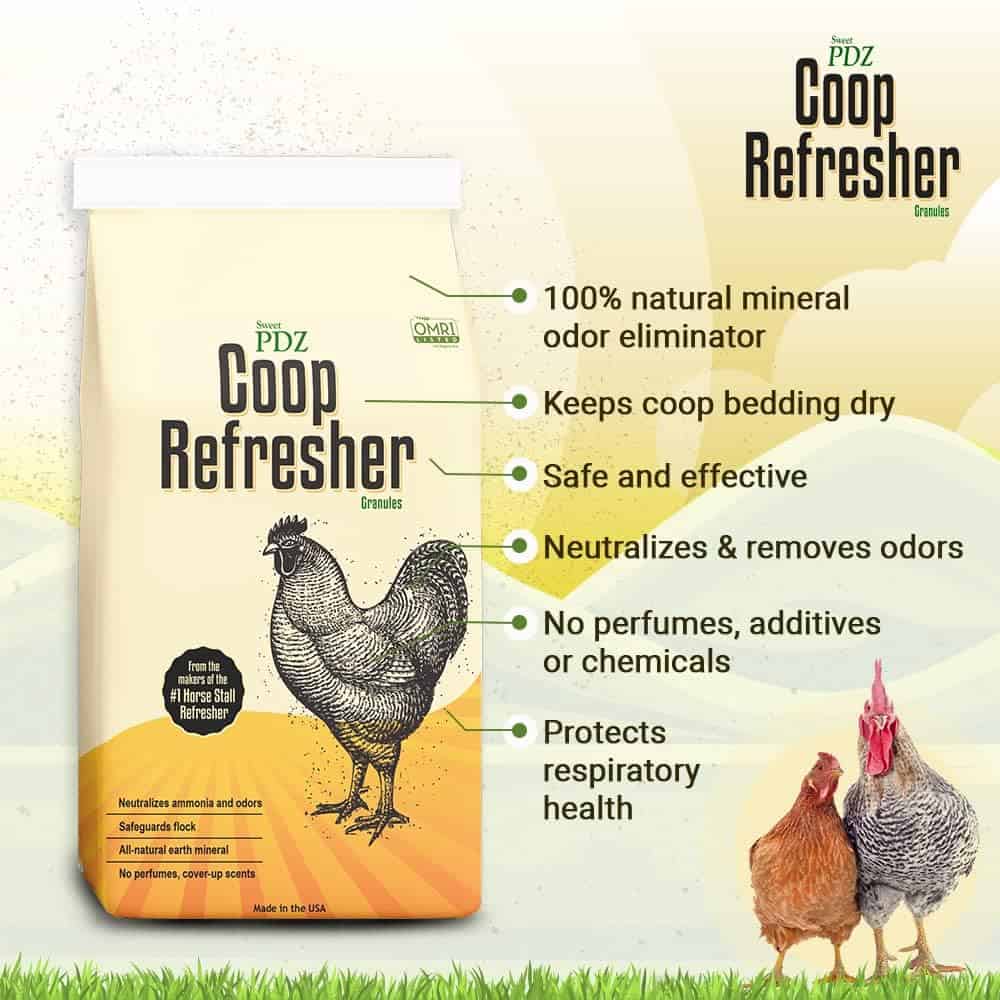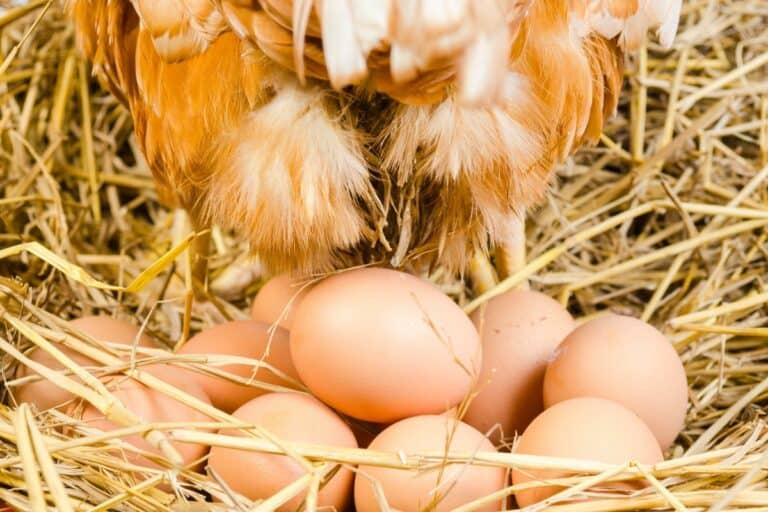What Are The Most Common Breeds Of Chickens And Their Uses?
There are hundreds of chicken breeds to choose from when you are wanting to start a flock, but some are, by far, more popular or commonly seen than others. Every chicken has its own unique purpose and reasons for why people prefer some breeds over others. But what is the most common breed of chicken? Well, that depends on what you want to use them for.
Every country has its own ‘most common’ breed of chicken, but many backyard flock raisers, whether using them for eggs, meat or both, prefer the Australorp, Orpington and the Rhode Island Red.
Because popular and common breeds can be somewhat subjective, it may be necessary to break down the chickens into categories, such as egg layers vs meat producers. I will go over what their pros and cons are and why each bird has its specific desirable traits. Keep reading to learn more about the different breeds of chooks and what they are best for!
But before you dive into this topic, did you know I've got a page packed with my go-to chicken stuff? From the best feed to handy tools, it's all there. Don't you want the best for your flock? Check it out right here.
Most Common Breeds Of Egg Layers In Chickens
Many of these egg-laying breeds of chickens were specifically bred for the purpose of laying lots of eggs a year. More than the average. Many of them can lay close to an egg a day! Chickens can start laying as early as 20 weeks old.
#1 Golden Comet
This is a hybrid breed that was specifically created to be a fantastic egg producer. This hardy hen is a combination of the Rhode Island Red and the Leghorn but is unfortunately prone to health issues and soft-shelled eggs because of their high production levels.
Pros:
- Gentle temperament
- Expect over 325 eggs a year
- Withstands cold temperatures well
Cons:
- Health issues from high production rate
- Produce soft-shelled eggs sometimes
- Need extra calcium for frequent egg-laying
#2 Australorp

A breed that hails from Australia, they are social and entertaining and they have held the record in the past for most eggs laid in a year until a white leghorn beat them! One Australorp laid 364 eggs in 365 days!
Pros:
- Calm and docile
- Expect about 250 eggs a year
- Cold hardy
- Talkative and good mothers
Cons:
- Broody if encouraged
#3 ISA Brown
The ISA Brown is another common backyard breed that is a prolific egg-layer! These hens are super hardy and were another that was bred specifically for egg production. People with children would benefit greatly from these friendly and outgoing ladies.
Pros:
- Family friendly and docile
- Expect over 300 to 350 eggs per year!
- Cold hardy
Cons:
- Major egg producers can sometimes lay soft-shelled eggs
- Need extra calcium for frequent eggs
#4 The Rhode Island Red
This breed has become a staple of backyard chicken flocks in America. They are another breed that can lay tons of eggs, plus they are low maintenance and very self-sufficient. However, it is rumored that these ladies can come with some sass, so be sure they aren’t bullying other chickens.
Pros:
- Hardy in most environments
- Low maintenance
- Expect at least 300 eggs per year
Cons:
- More aggressive than other breeds
- Bossy
#5 The Orpington
The Orpington is an adorable breed that is robust and can handle even the harshest climates. They make fabulous mothers and can be soft-natured and sometimes easily bullied by other breeds of chickens.
Pros:
- Great egg layers even in winter months
- Expect at least 300 eggs a year
- Gentle and sweet natured
- Great dual-purpose chicken
Cons:
- Can be easily bullied
These lovely laying ladies are only a few of the common breeds used for egg production. The choice is yours and you really can’t go wrong with any of them. They are all fantastic egg-layers with wonderful and entertaining personalities!
Wait, I have some recommendations for you!
Before you go any further, I want you to take a look at some of the recommendations I've handpicked for you. I think these are essential items you should have for your chickens flock. You can check them out and buy them directly from Amazon.
 |  |  |  |
| Essential accessory for your coop | No more tripping over hoses! | Predator protection made easy | Comfort + style is possible |
Most Common Breeds Of Chicken Used For Meat Production
A chicken that is bred for the intention of being butchered for meat is called a “broiler”. There are many different kinds of meat chickens and dual-purpose birds, so it is important that you do your research regarding which kind would be best for your family’s needs.
Something to consider when researching is do you want your chickens to also lay eggs and what growth rate are you looking for with your meat birds? Many meat producers grow quickly and are butchered at a young age so that their meat stays tender and flavorful. Older birds tend to have tougher and less tasty meat.

#1 The Cornish Cross
This breed is by far one of the most common chickens used for meat production. Especially in a commercial environment. Most types of chickens used for commercial meat purposes are going to be Cornish Cross.
They are terrible egg-layers, get fat quickly, and are typically harvested between 8 and 10 weeks of age. Sounds pretty young, and it is, but this is how we get those tasty, tender chickens at the store.
Pros:
- Fatten up easily
- Heavy meat production
- Ready to harvest young
- Good disposition
Cons:
- Many health problems including heart issues
- Not good for reproduction
- Require a lot of feed
- Not good for free-range
#2 Ginger Broiler
A chicken that is similar to the growth rate of the Cornish Cross, but with much fewer health problems is the Ginger Broiler. They fatten quickly and can also be harvested at a young age, usually around 8 weeks.
Pros:
- Nice meat production
- Good foragers
- Good for free range
- Can be kept longer than the Cornish Cross
Cons:
- Slightly smaller than the Cornish Cross
#3 Big Red Broilers
A hybrid chicken, like the Cornish Cross, is derived from the Red Ranger. They do well at foraging and require less feed than some meat production birds. They don’t make great dual-purpose chickens as the eggs that they lay are often infertile.
Pros:
- Quick growth rate
- Good foragers
- Decent meat production
- Few health issues
Cons:
- Not good for reproduction
- Slightly slower growth rate than the Cornish Cross
#4 Bresse
This French breed of chicken has been said to have very tasty and desirable meat. They are also not terrible egg-layers either. They aren’t usually butchered until they are twice the age of the Cornish Cross when harvested.

Pros:
- Tasty, marbled meat
- 3-5 eggs a week
- Good foragers
Cons:
- Slower growth rate
- Needs a special diet to get the traditional “French Bresse” flavor
Most Common Breeds Of Dual-Purpose Chickens
There are plenty of chicken breeds that are great egg-layers as well as great meat birds. Some people may not realize how many of these common egg producers are often used for meat as well. While we may typically see Cornish Cross chickens at the grocery, backyard raisers have taken to using other breeds for both eggs and meat.
#1 The Jersey Giant
This bird is a big one like the name implies. They also have a slower growth rate because of this. The breed is hardy and tough, making great watchmen over most flocks. The Jersey Giant can also produce over 200 eggs a year.
Pros:
- Good egg-layers
- Heavy meat production
- Self-sustaining
- Tough and hardy breed
Cons:
- Slow growth rate

#2 The Orpington
That’s right, the Orpington makes its way onto another list. They are truly an excellent dual-purpose chicken! These wonderful mothers and egg-layers also make delicious table birds… if you don’t mind the wait, that is.
Pros:
- Lay over 200 eggs a year
- Sweet disposition
- Hardy and tough
- Good foragers
Cons:
- Slower growth rate
- Not quite as many eggs as some dual-purpose hens
#3 Delaware
Another great dual-purpose chicken, the Delaware breed is a good egg-layer that reaches harvest maturity by the time they are 16 weeks.
Pros:
- Good foragers
- Does well free-range
- Good egg-layers
Cons:
- Smaller bird
- Average growth rate
#4 Light Or Speckled Sussex
A docile and hardy breed, the Light or Speckled Sussex can make a great addition to most flocks intended for dual-purpose use. They are protective and do well as guard chickens.
Pros:
- Sweet disposition
- Heavy meat production
- Decent egg-layers
- Watchful and protective
Cons:
- Slower growth rate
- Slightly smaller birds
- Lay eggs later than some
#5 Australorp

Much like the Orpington, the Australorp also makes for an eggcellent egg-layer as well as a great meat bird. While they may be slightly better at laying eggs, their medium build and tasty meat make for a pretty good table bird.
Pros:
- Fantastic egg-layers
- Friendly
- Cold hardy
Cons:
- Slower growth rate
- Makes for a better egg-layer
The Most Common Breed Of Chicken Depends On Their Use
There are hundreds of breeds, so understanding which one or ones you should get for your backyard flock are just up to you. What exactly are you looking for? Chickens, whether you have them for meat or eggs, are a fabulous way of creating a self-sustaining lifestyle that can be rewarding for the whole family.
Also, remember to follow these advices if you plan to mix chicken breeds in your flock.







